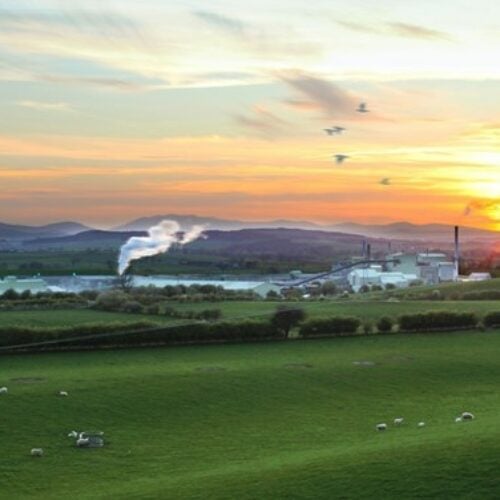Net zero by 2050 will require “unprecedented innovation” across the economy, the Energy Systems Catapult (ESC) has concluded in a new report.
The government-funded research group’s report, Innovating to Net Zero used the Energy System Modelling Environment (ESME) to track and test the UK’s potential paths to net zero by 2050.
Crucially it found that the UK is unlikely to become net zero before 2050, despite the calls from a number of environmental and political groups to lower the target further, for example, the Green Party has been pushing for net zero by 2030.
It modelled hundreds of pathways to net zero, and investigated the benefits and challenges of either a top down approach to systemic change – the Clockwork Pathway – or a bottom down approach – the Patchwork Pathway.
These considered both centralised, government led change and that driven by consumers at local levels to the electricity network, as well as other factors such as technology, land use and transport, to provide a whole system approach to decarbonisation. As such, it was able to examine behavioural change and its effect upon decarbonisation as well as technological change.
ESC found that innovation was key to decarbonisation within all its scenarios. As such, government must support innovation and facilitate the scale-up of low carbon technology across a number of industries, along with land use and lifestyle changes are required to make net zero by 2050 possible.
Innovative ways to deploy new technologies, business models, and consumer offering will also be required, driven by policy, regulation and market design.
Modelling both the Patchwork and Clockwork scenarios allowed ESC to “understand the different combinations, interactions and trade-offs of competing decarbonisation options to reach the most cost-optimised approaches,” according to Scott Milne, insight and evidence lead at the Energy Systems Catapult.
“Broadly each potential pathway uses a combination of two different approaches: a top-down technology focused approach or a bottom-up behaviour focused approach.
“However, what stands out is – no matter which pathway the UK takes – innovation, investment and incentives across low carbon technology, land use and lifestyle is essential to achieve Net Zero.
Overall, electricity generation will need to double to 600TWh due to electrification of heating and transport, and if hydrogen is produced through electrolysis, it may need to treble.
Hydrogen may also need to grow to levels equivalent to today’s electricity generation, up to 300TWh/year.
Depending on the technology combinations, the UK could need as much as 90GW of wind capacity generating 370TWh the report found. Even within lower renewables scenarios modelled, 50GW of wind power generating 212TWh will be needed, and this will also need nuclear power to be maximised.
Such a maximised nuclear scenario would require up to 30GW of advanced capacity, along with 7GW of small modular reactor capacity, a technology favoured in the Patchwork scenario.
Additionally, up to 80GW of solar may be needed, generating 73TWh. Carbon capture and storage (CCS) alongside bioenergy – the likes of which is being deployed by Drax – will be needed, up to 170MtCO2/year, the ESC report states.
Dr Nina Skorupska CBE, chief executive of the Renewable Energy Association, has welcomed the report, particularly its emphasis on the role of bioenergy, but urged the ESC “to go even further to assess the impact Bioenergy could have across heat and transport”.
“Going forward government must take action to progress the options outlined in the report and integrate these recommendations into their net zero strategy,” Skorupska added.
However, even if the UK is able to deploy renewable energy systems at scale quickly, along with changes to lifestyle such as reduced meat consumption and land use such as planting a new forest, meeting net zero before 2050 is unlikely.
If the UK was to fully decarbonise faster than the thirty years currently enshrined in UK law, highly speculative changes would be required such as banning aviation.
But the ESC report demonstrates a number of pathways and options for the UK, and makes four key policy recommendations to the government as part of its report, including reforming the power markets to improve efficiency and unlock flexibility and distributed low carbon technologies, which includes matching user needs and local system circumstances.
There should also be a balanced, economy wide framework of market, pricing regulatory interventions, such as new carbon standards for buildings to promote the adoption of low or zero carbon heating and potentially road transport, as well as new incentives for climate friendly land use choices.
Local area energy planning should be rolled out to identify the unique low carbon solutions, infrastructure and investment needs in varying local areas to help shape decision making,
Lastly, there should be direct support for innovation and early deployment of technology such as industrial clusters for CCS, funding mechanisms for CO2 transport and storage infrastructure and support for advanced and modular nuclear and floating offshore wind, the ESC suggested.
David Smith, chief executive of Energy Networks Association, pointed to the investment and work being done by the energy networks into innovation, in particular the Open Networks Project, designed to unlock flexibility and support greater levels of low carbon technology coming onto the network.
“We now need the government to make the big and bold policy decisions which support this approach in the long term, backed up by a regulatory framework that encourages innovation and investment,” Smith added.
Additional reporting by Molly Lempriere.





